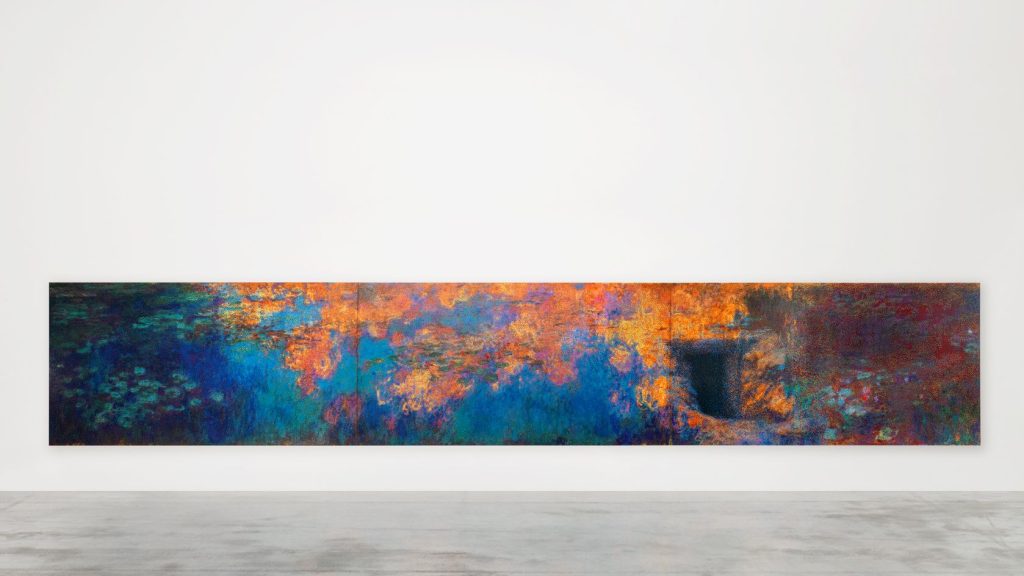
photos: © Ela Bialkowska/OKNO studio courtesy of the artist and Galleria Continua
In advance of his first design-focused exhibition —opening next month— The Design Museum, London, unveils a new work by Ai Weiwei.
Constructed entirely of Lego, the work is a recreation of one the most famous paintings by French Impressionist Claude Monet. It is the largest Lego artwork Ai Weiwei has ever made.
Titled Water Lilies #1, the work is over 15m in length and will span the entire length of one of the walls in the Design Museum gallery. It is made from nearly 650,000 studs of Lego bricks, in 22 colours.
In the original painting, Monet depicts one of the lily ponds in the gardens of his home in Giverny near Paris. It is an image that has become world-famous for its depiction of nature’s tranquil beauty. However, the pond and gardens were a man-made construct, designed and created by Monet himself at the turn of the 20th century. He had the nearby river Epte partially diverted in order to create this idealized landscape.
By recreating this famous scene, Ai Weiwei challenges our ideas of reality and beauty. The new image has been constructed out of Lego bricks to strip away Monet’s brushstrokes in favour of a depersonalised language of industrial parts and colours. These pixel-like blocks suggest contemporary digital technologies which are central to modern life, and in reference to how art is often disseminated in the contemporary world. Challenging viewers further, included on the right-hand side of Ai’s version is a dark portal, which is the door to the underground dugout in Xinjiang province where Ai and his father, Ai Qing, lived in forced exile in the 1960s. Their hellish desert home punctures the watery paradise.
Water Lilies #1 will be seen alongside another major new Lego artwork by Ai Weiwei, which is also making its international debut at the Design Museum. First announced in January, Untitled (Lego Incident) is part of a series of five expansive ‘fields’ where hundreds of thousands of objects will be laid out on the gallery floor. In this field, visitors will see thousands of Lego blocks which were all donated to the artist by members of public from around the world, in response to Lego briefly refusing to sell their products to him in 2014. These donated bricks are presented at the Design Museum for the first time as a fully-formed artwork.
_





